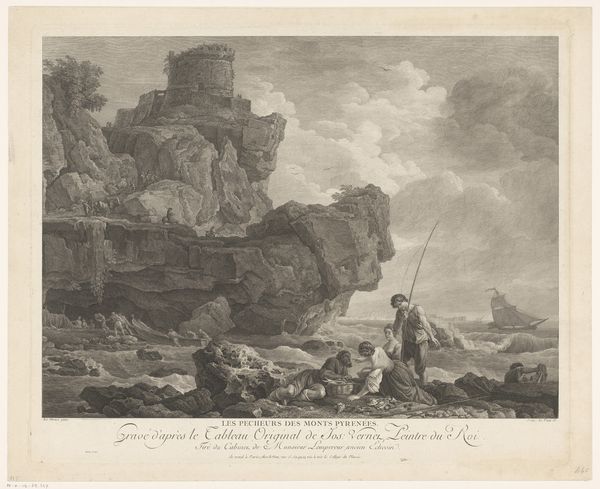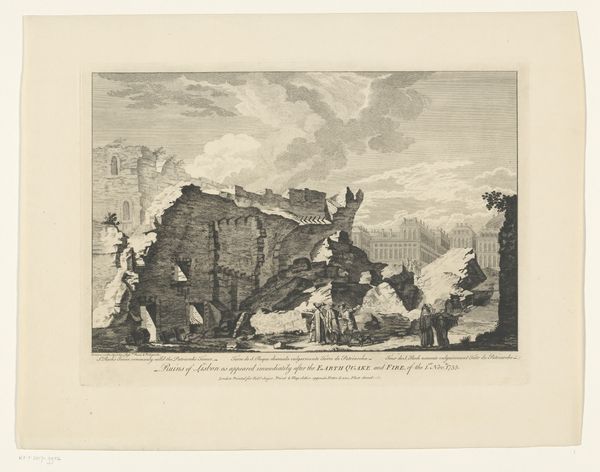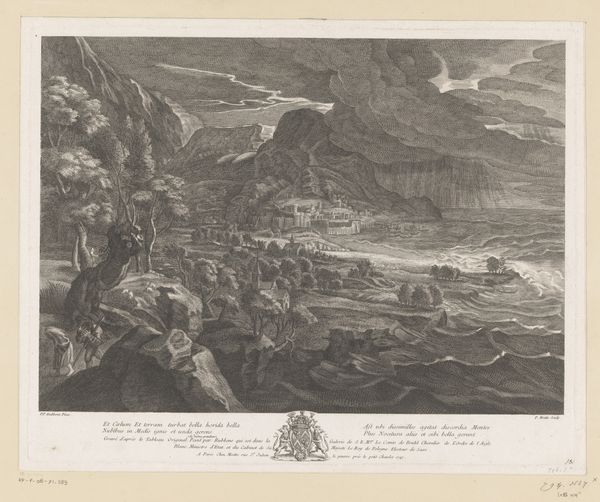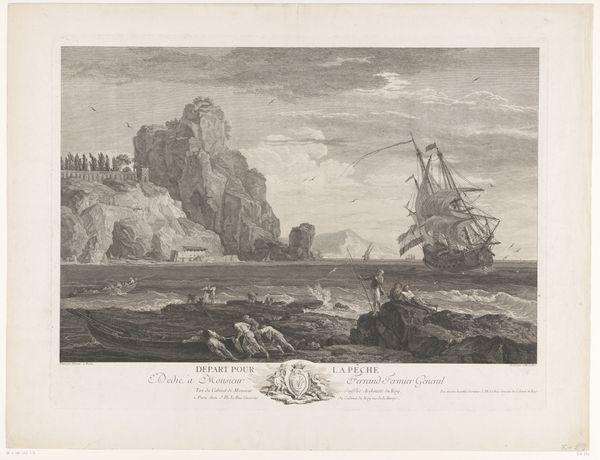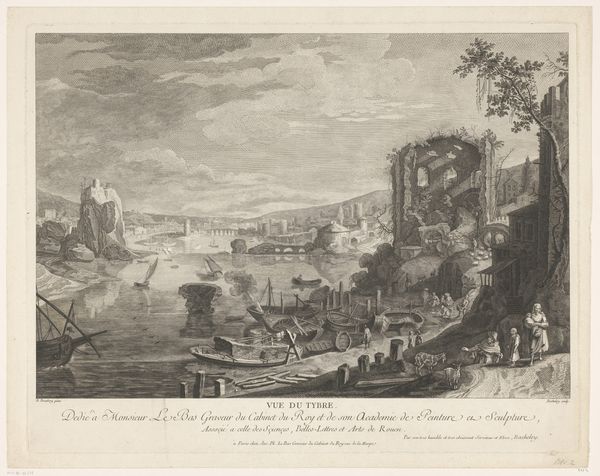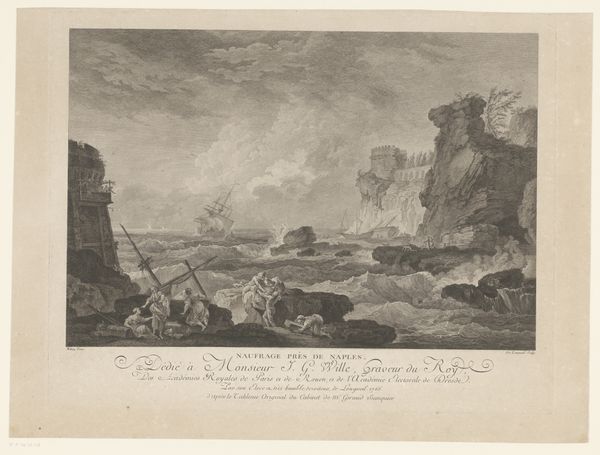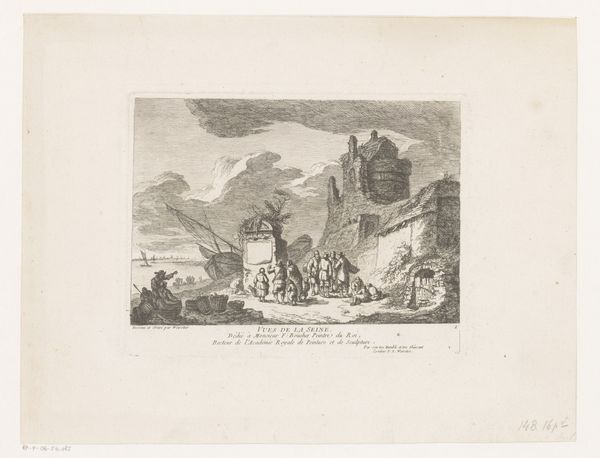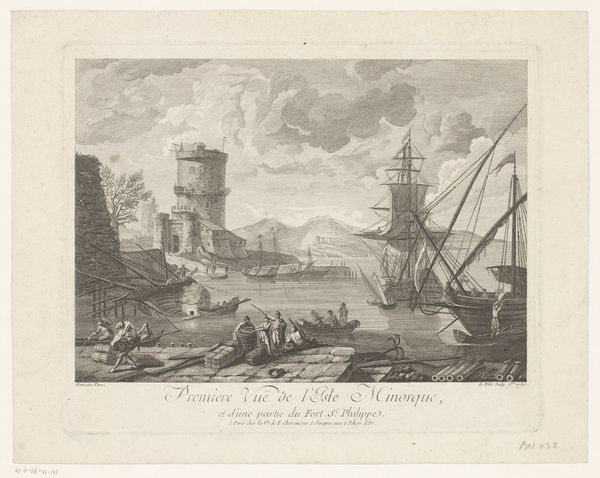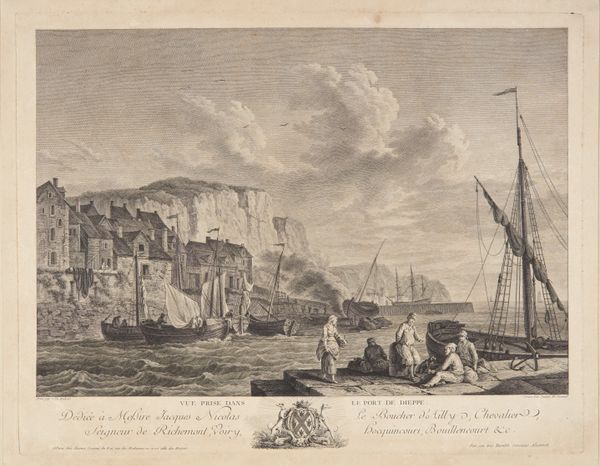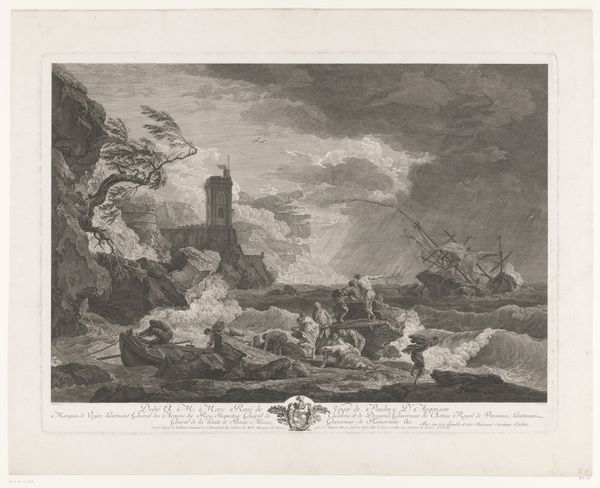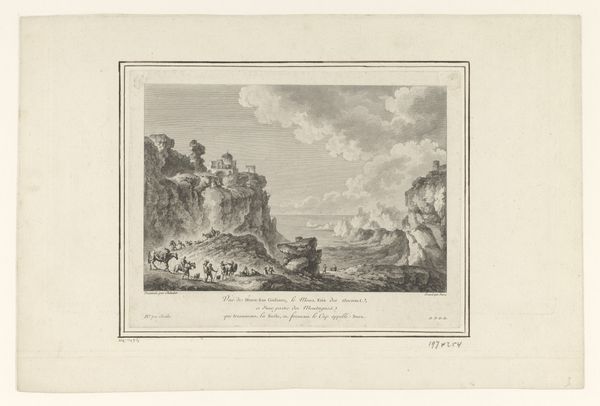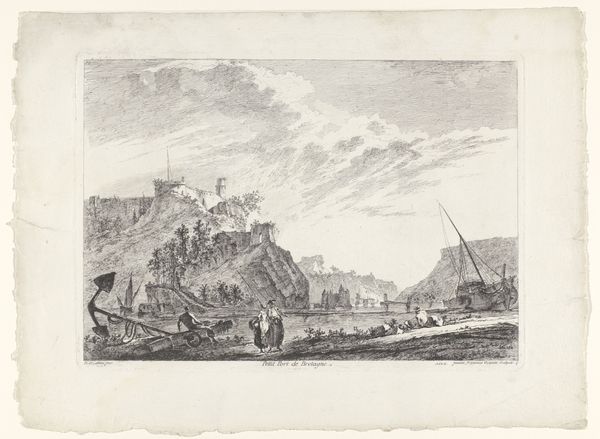
Dimensions: height 430 mm, width 575 mm
Copyright: Rijks Museum: Open Domain
Curator: The fine lines of John Pye's engraving, created between 1773 and 1779, depict "Gezicht op Europa Point, Gibraltar." There’s a rather theatrical feel to it. Editor: Absolutely. There’s something almost melancholy in the muted greyscale; like a stage set prepared for a drama about colonialism and military occupation. Curator: In terms of symbolic representation, Gibraltar has historically represented ideas of military strength and the reach of empires, particularly Britain's maritime power. It’s interesting how Pye captures this sense of power, almost through absence; we only see the architecture on the cliffs, and suggested maritime activity in the boats at the shoreline. Editor: It really speaks to the tension between the picturesque beauty and the implied violence. It’s so characteristic of the baroque era to contain multiple narrative strands within a single frame, almost contradicting each other, I would say. The light creates an emotional feeling for the land itself. Curator: It almost feels like we’re viewing a historical record and a myth simultaneously. Do you find the stark contrasts between light and shadow evoke specific feelings for you? Editor: Definitely. I see the deep shadows near the rock face and they make me wonder about the local populations who undoubtedly experienced this landscape in very different terms than the colonial figures suggested by those buildings above. The visual hierarchy puts their stories in the shadows, which makes the work implicitly about power and perspective. The human activity almost blends into the earth that is beneath their feet; are we merely transient here? Curator: That interpretation brings such contemporary concerns into dialogue with historical modes of seeing. And yes, it does evoke a sense of power; but it makes me think about the passage of time—the sense that we are viewing the landscape at this moment. Editor: The layering in this image asks us to be critical about whose perspective dominates the historical narrative and encourages to remember there are always hidden or unacknowledged narratives within the dominant representations of place.
Comments
No comments
Be the first to comment and join the conversation on the ultimate creative platform.
